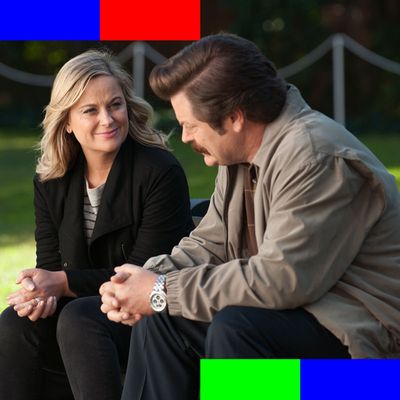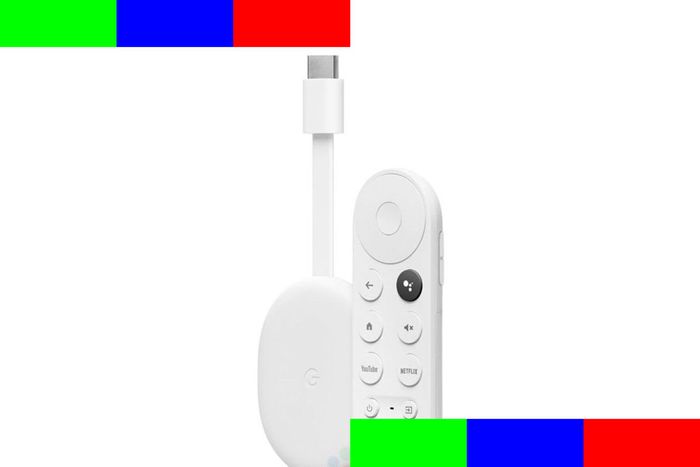
The Parks-ocalypse is upon us.
Yesterday, Parks and Recreation was available on multiple streaming platforms, including the Big Three of Netflix, Hulu, and Amazon Prime Video. Today, short of buying it, fans looking for a Pawnee fix will have to download Peacock if they want on-demand access to the beloved comedy. The development was not a surprise: NBCUniversal, which owns Peacock and controls the rights to Parks, said last year that it was taking back streaming rights to several of its legacy hits in order to build an audience base for Peacock. As part of the same strategy, NBCU-owned The Office will also become a Peacock exclusive early next year when it leaves its long-time digital home on Netflix.
Streaming subscribers have sort of gotten used to content musical chairs over the years, but the launch of HBO Max, Disney+, and now Peacock has added a whole new layer of annoyance for fans who just want to be able to stream their favorite old TV shows and movies. Instead of hopping between the aforementioned Big Three, content is now being spread out to at least six well-funded platforms demanding consumers’ attention and, oftentimes, their money. Disney has pulled back most of its blockbuster movies from Netflix over the last three years so it could sell Disney+ as the destination for almost every big thing in the Disney vaults. Similarly, Friends was homeless for the first part of 2020 because WarnerMedia wanted it to anchor the May launch of HBO Max.
In the case of Parks, the good news for viewers is that, at least for now, Peacock is making all seasons of Parks available on its free tier. While there will be ad breaks, you don’t need to subscribe (or even have a cable login) to keep watching the show on Peacock. And now that the streamer has struck a carriage deal with Roku, Peacock is pretty widely available (though it’s still not on Amazon’s Fire TV platform). It’s a much less dire situation than the one many Friends superfans found themselves in when WarnerMedia decided to make that show available on a service with the biggest monthly price tag ($15 per month) of any big streamer.
Still, there’s a case to be made that what’s good for Peacock (exclusive rights to a much-loved comedy) is bad for the long-term popularity of Parks. Unlike Friends or even The Office at its peak, Parks was never a ratings blockbuster. It even struggled to get renewed during its first few years. But it has thrived during its digital afterlife, with its ubiquity on multiple platforms making it a favorite to streaming audiences, at least based on the limited public data there is. Back in 2017, Hulu (without releasing any specific numbers) said that streams of Parks jumped 32 percent that year vs. 2016 — impressive growth given the show signed off in 2015. And in 2018, Nielsen streaming ratings shared with the Wall Street Journal indicated Parks was one of the most-consumed TV titles on Netflix that year, at least as measured by minutes consumed. (That metric is hardly the most important one for streamers when determining a show’s success or even value, but it does hint at overall passion for a show.)
NBCUniversal clearly knows all of this, and it’s why the company decided Parks would be a great tool in its effort to convince consumers to spend time with Peacock. Problem is, even though it’s free, it will likely be years before Peacock will come anywhere close to reaching as many viewers as a Netflix, Prime Video, or Hulu — let alone the potential audience for Parks when the show was on all three streamers. Until yesterday, the sitcom was to streaming what CNN or TBS is to a cable package: Almost everyone got it. Whether you went to watch Stranger Things or PEN15 or The Boys, an episode of Parks was just a click away. Now audiences will have to make an effort to find it.
What’s more, the Parks fan base will surely grow more slowly over the next couple of years. I’ve heard from industry folks over the years that on any given day a few thousand viewers decide to start streaming a big tentpole such as Grey’s Anatomy for the very first time. I don’t have stats for Parks, but given how timeless its comedy is and the show’s previous ubiquity, it wouldn’t shock me if Parks was growing at a similarly healthy clip. Being on Peacock won’t stop the show from finding new fans, particularly since the platform is free and will be heavily promoted by NBCUniversal. I just think there’s a risk of the show losing some pop-culture momentum — the kind that The Office and Friends had gained during recent years — as it shifts to a newer platform with far less reach.
What it means for Netflix: By itself, losing Parks obviously isn’t a disaster for the dominant streamer. Netflix by now is very used to dealing with the loss of big shows and entire content libraries, and its growth hasn’t been slowed a bit. The company just takes the money it saves from licensing a Friends or The Office and invests it in more originals or even other classic shows (such as Seinfeld, which arrives on the service next year). And yet at some point, those subscribers who appreciated having a seemingly endless supply of major retro hits available on one platform will begin to notice how much is now missing.
There’s no sign Netflix is anywhere close to panicking over this. Last month it let That ’70s Show leave the service, even though rights to the comedy are controlled by Carsey-Werner, which sells its shows to multiple platforms and no doubt would’ve been willing to keep the series on Netflix for the right price. Given Netflix’s deep pockets, it’s clear the streamer decided it wasn’t worth paying up (though it’s always possible the show could return at some future date.) Or, perhaps, the streamer decided to invest its old-school-TV budget in programming less visible on streaming — like the seven sitcoms with Black casts it’s in the process of adding to the service. Thing is, while some subscribers very well may decide to drop Netflix because they can no longer count on finding some of the big titles produced by a Disney or NBCUniversal, there is still so much classic TV content not streaming (or streaming on small platforms) that I think it won’t be harmed that much, if at all.
Say Farewell to F Is for Family
Netflix’s animated comedy hit F Is for Family will be coming back for a fifth season, but this time the “F” will stand for something else: final. As Buffering newsletter readers found out first Thursday, the 1970s-set comedy, which revolves around the decidedly politically incorrect (but period-appropriate) Murphy clan, has been renewed for one last go-round.
I will happily admit F Is for Family is one of my favorite half-hours on Netflix, in part because it comes far closer to depicting what it was like to grow up in the ’70s than almost anything I’ve ever seen on TV. (Don’t even get me started on That ’70s Show and its super-sanitized version of the decade.) More details on the final season here.
The Device Wars: Google and Netflix Shack Up
As expected, Google announced on Wednesday its brand new Chromecast media player (with a remote control — finally!) and a whole new user interface it’s calling Google TV. Pretty much all of the leaks we reported here last week proved to be accurate. The one small surprise: Google struck a deal to bundle the revamped Chromecast together with six months of Netflix’s two-screen plan for the very attractive price of $90. By itself, the new device costs $50, while six months of Netflix will set you back $78. The bundle’s $38 savings means consumers are basically getting a full-featured streaming player for just $12. The deal applies even to current Netflix customers, which means that if you’re in the market for a new streaming device (maybe because you can’t get HBO Max on Roku?), Google just rolled out a hell of a deal. Netflix could also be a winner here, since in addition to potentially luring in some new subscribers, the partnership with Google will help reduce churn among existing customers. It also snagged some potentially valuable real estate on the Chromecast remote: The only other services with a dedicated button are Google’s own YouTube and the Google Assistant.
The Google rollout follows Monday’s unveiling of Roku’s latest update to its product lineup. It’s nothing nearly as sexy as what Google announced — their flagship Ultra is getting an upgrade to its specs (it’ll run faster and more smoothly), and there’s a nifty, very compact new soundbar with Roku built in (it’s called the Streambar). The device giant also made some important tweaks to its operating system — most notably announcing that it will support Apple’s AirPlay 2 and HomeKit on newer Roku devices. That will make Roku the only major device compatible with Amazon’s Alexa, Google Assistant, and Apple’s Siri. Plus, Apple users will finally be able to cast shows and apps from their Macs and iPhones to their TV sets via a Roku. As the Verge’s Julia Alexander put together, this could also be a great workaround for HBO Max subscribers with Roku players looking for a way to finally watch the service on a TV set.
Two for the Road: Mad Men’s New Streaming Home; Mulan Streaming Data
➽ Don Draper is back on AMC — or, to be more precise, AMC+. Starting today, all seven seasons of Mad Men, which left Netflix over the summer, are streaming commercial-free on AMC’s recently supersized streaming service. Draper’s return is the result of a licensing deal AMC and producer Lionsgate struck back in July, as well as a major component in AMC’s effort to get consumers to sign up for AMC+. Read more about it, and check out a nifty new promo for the service, here.
➽ We have some more hard data to suggest the Disney+ release of Mulan did…OK? Nielsen’s newest weekly streaming data snapshot reports the movie, released at the start of September, just managed to make the rating giant’s top 10 list of streaming titles, tallying 525 million minutes of streaming during the week of Aug. 31-Sept. 6. That’s impressive given two things: that Mulan cost $30 to access, and that it didn’t hit Disney+ until Sept. 4, giving it just three days to rack up views. Also, remember Nielsen’s report doesn’t adjust for length, so a TV show with 200 episodes — or even 10 one-hour episodes— is going to have an advantage over a movie like Mulan, which runs only about two hours long. If you divide the 525 minutes Nielsen measured for Mulan by 120, it comes out to about 4.4 million full streams of the movie — a solid number for three days of streaming. Meanwhile, Nielsen’s report for the first week of September also includes the arrival of season two of Prime Video’s The Boys, which tallied 891 million minutes of viewing (including folks who watched season one), ranking second overall. The top show for the week? The Sony Pictures TV-produced YouTube Original-turned-Netflix acquisition Cobra Kai, whose 20 episode library tallied 2.2 billion minutes of viewing, up from the 1.4 billion it racked up during its first three days of release.
The Time Capsule: Everyone’s Favorite Zip Code
Darren Star has a pretty big weekend ahead. Tomorrow marks the debut of the TV-producing titan’s truly delightful (and very needed right now) new Netflix comedy Emily in Paris, a show originally intended for cable’s TV Land that will instead serve as Star’s streaming debut. Then on Sunday, Star celebrates another major milestone — the 30th anniversary of the very first TV show he ever created: Beverly Hills, 90210. (A moment of silence for my fellow Gen Xers, and maybe even a few elder millennials, who are feeling very old right now.)
Sadly, even though 90210 was one of Fox’s earliest breakout hits, the network isn’t planning any major commemoration of the event. But several former 90210 producers and writers will be taking part in a virtual celebration of the big 3-0 on Sunday via a three-hour live edition of The Beverly Hills 90210 Show Videocast, which is set to include appearances from several cast members (including Jason Priestley, Ian Ziering, and Gabrielle Carteris) as well as Star himself. In the meantime, this week’s Time Capsule pays tribute to the 90210 gang with a look at how Fox sold the show during its first season back in the fall of 1990.
Parting Shot
“We continue to believe legacy media needs to shift its new movies to streaming, as feature films are their most iconic content that would drive subscriber acquisition.”
—LightShed Partners’ Rich Greenfield, arguing in a new analysis that conglomerates need to ditch theaters to boost sign-ups for their streaming services.






